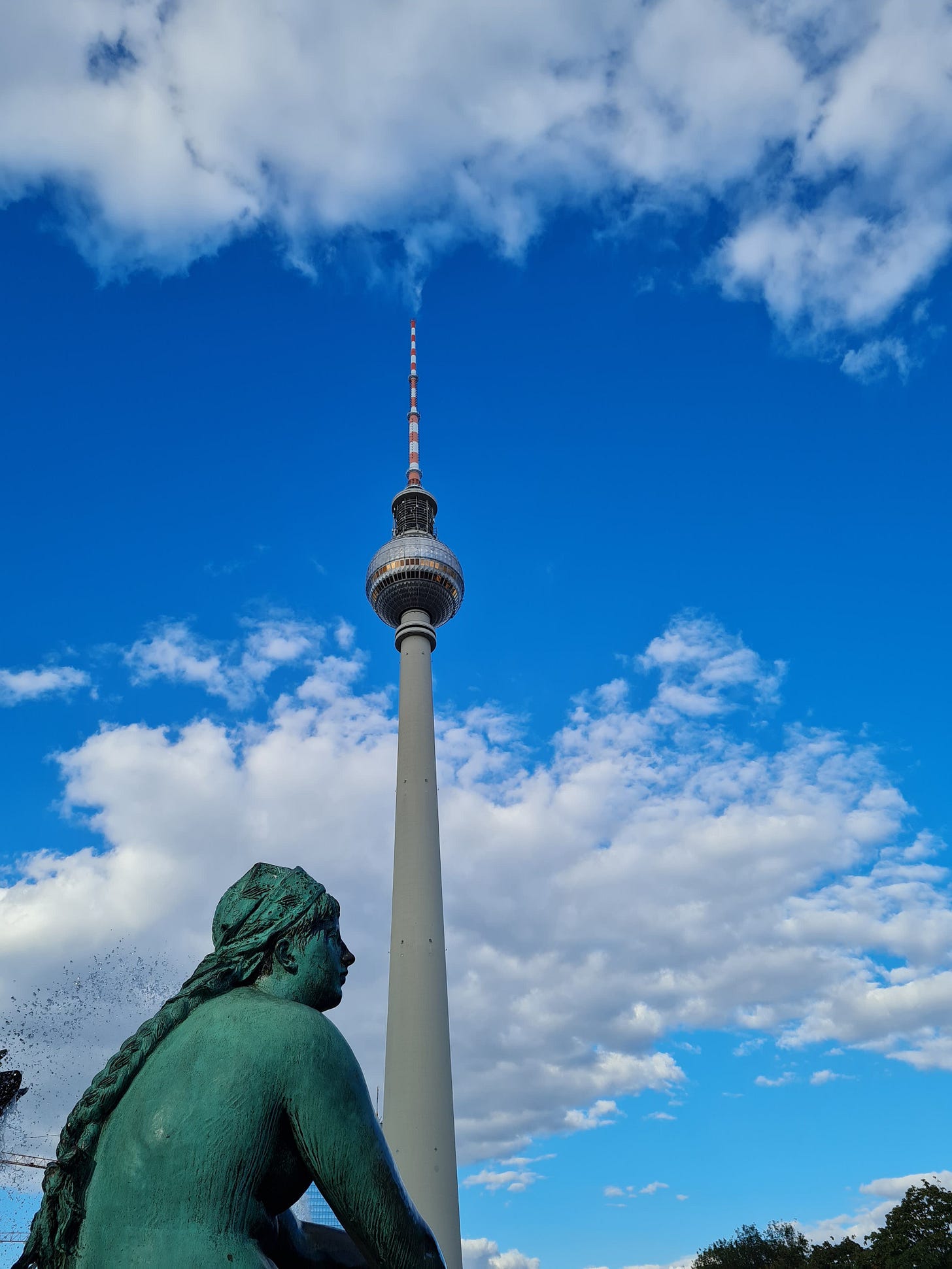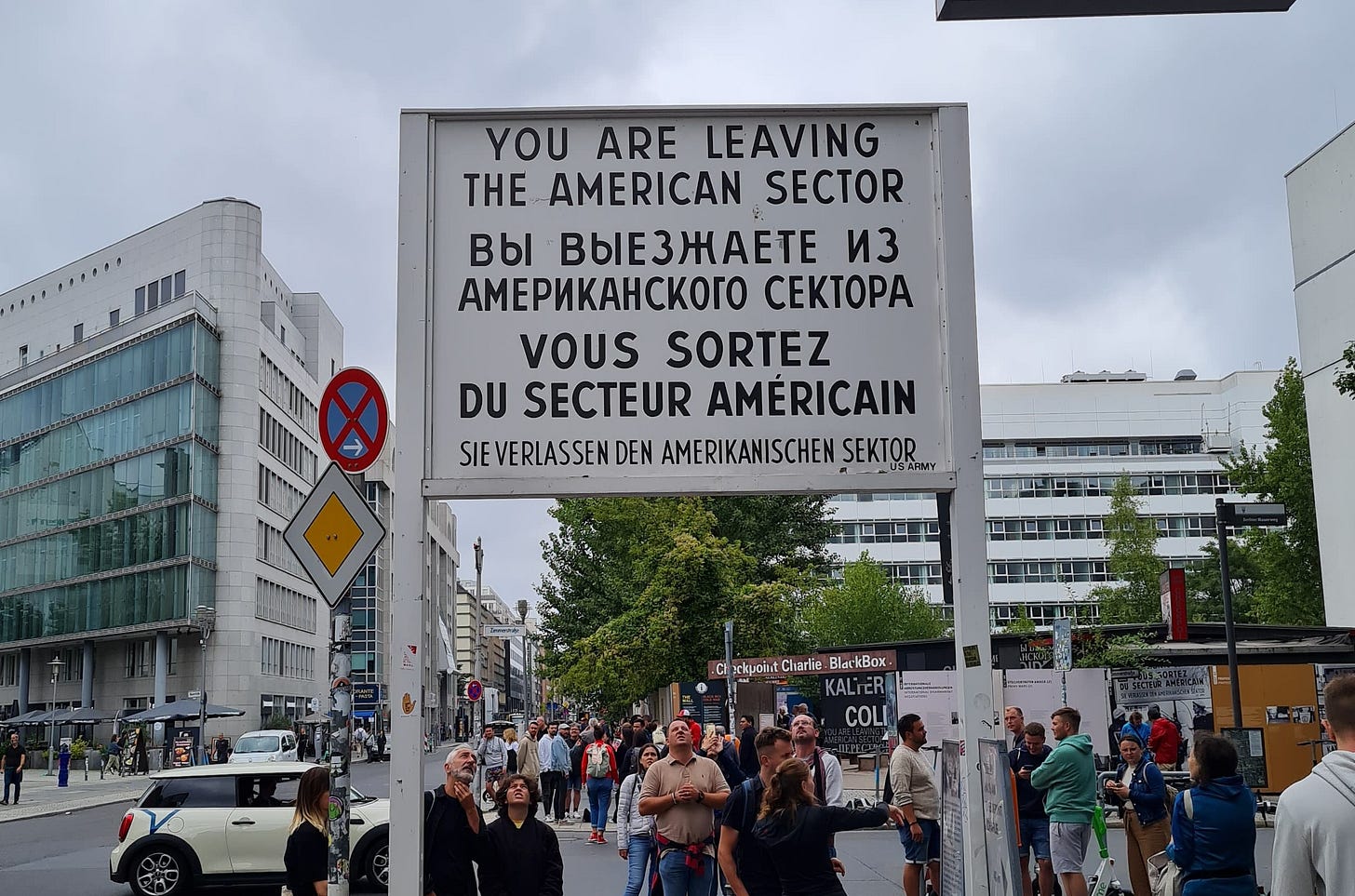Where there was once the threat of nuclear war, today the threats are fast food and fast cars. Checkpoint Charlie is a good place to get run over, our tour guide tells us. It regularly happens. A quick look around and you see why.
The pavements are clogged with selfie snappers and tourist touts. There’s a line waiting to take a photo with the Checkpoint. A man snaps one of his wife and children, then turns to the waiting queue. He picks a volunteer and then joins his family. A Cold War snapshot.
What was that about nuclear war? Well, it nearly started here. An American diplomat wanted to go to the opera in East Berlin. Diplomats didn’t normally need papers, but the Soviets insisted. The diplomat through a tantrum, a tantrum that eventually resulted in a full standoff between American and Soviet tanks.
The Checkpoint is more benign these days, if you can avoid the traffic. Its main danger is the McDonald’s, fittingly, on the American side. It’s sanitised, but then it’s not real, really.
“I saw them put that sign up in the spring, ready for high season,” our tour guide pipes up. The sign she means is the famous board that tells you which sector you’re leaving, the American, or the Soviet. Meaningless now, of course, unless you’re the tourist board of Berlin.
The Checkpoint building isn’t real either. The original was taken down in 1990 to be shoved in a museum. The Cold War was over, old news, history. Various structures have imitated it since, have provided a clean, more tourist friendly experience.
This sort of Cold War Disneyland can also be seen at the East Side Gallery. It’s a real section of the wall, don’t worry. They haven’t taken that down and put it in a museum. A rebuild would be far too expensive.
But it’s a mural now. A good one, for sure. Everyone loves the section showing Brezhnev and Honecker having a good old smooch. Instagram-worthy content spans the whole length of the Wall.
The original wasn’t quite so pretty. Think electric fencing, watchtowers, barbed wire, guards, tank traps, anti-vehicle ditches, and the wonderfully named death strips.
You can’t keep all of that nowadays, obviously. Death strips tend to spoil the ambience. Watchtowers might freak everyone out. It just doesn’t always come across, when you’re looking at a mural, at a couple of world leaders swapping spit, that people used to die trying to cross this border.
The Cold War is a tourist pull for Berlin. Its landmarks are preserved and memorialised. The world nearly ended because of events at some of these places. Now it’s selfies and walking tours.
People need to learn though, don’t they? History comes to life at these places. They’re better than textbooks. But it’s hard to shake the feeling that the reason these places exist is because countries had, still have, lots of bombs pointed right at each other.
I scarper away from Cold War Disneyland. I take refuge in the shadow of the cathedral, Berlin’s most impressive sight. Birds swoop and soar around its large green dome, and I drink a beer by the river as the sun sets.
Germans sit around me in the late evening sun. You’re allowed to drink openly in the streets here, so everybody does. That sort of Berlin makes sense to me. German is being spoken, locals are living in their city. It doesn’t feel like a theme park.
But there’s a tourist in their midst. I’m no different to the man who photographed his family at Checkpoint Charlie. The tourist board of Berlin likes me just as much.
A small thank you
Recently this newsletter reached 100 subscribers! So this is a quick note to say thank you for being one of them. I hugely appreciate your support.
Some housekeeping
If you’d like to discover more newsletters like mine, you can subscribe to The Sample, which curates the best newsletters and sends you those worth subscribing to. You can subscribe through this link. Doing so helps this blog get more readers so please do check it out.








Cold War Disneyland 💀💀
Congrats on 100!!!